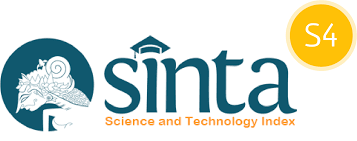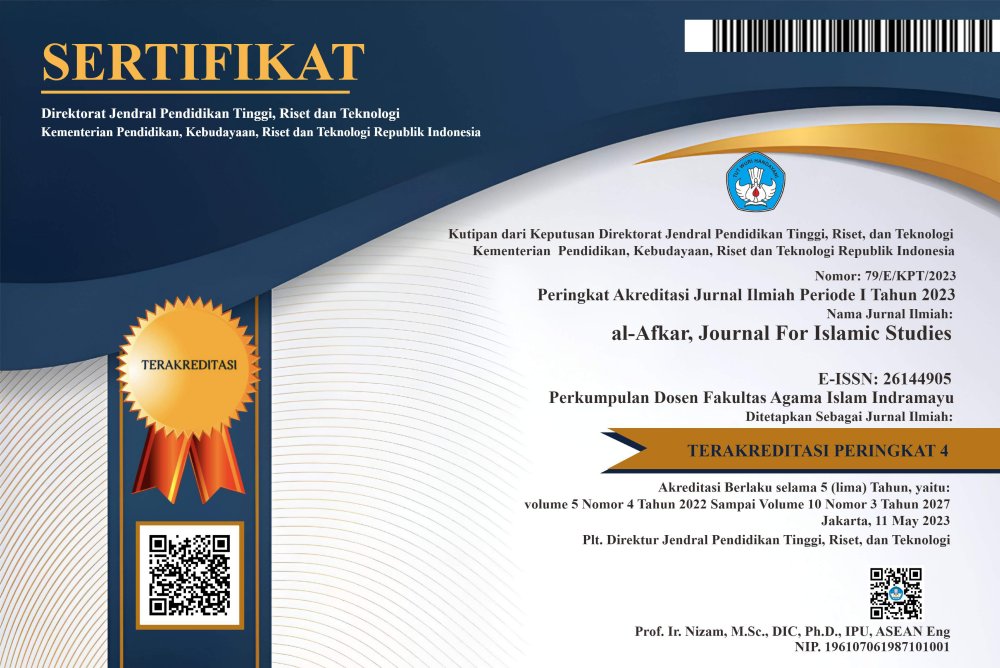E-Government in Selangor: a Case Study of Citizen’s Participation and its Challenges
DOI:
https://doi.org/10.31943/afkarjournal.v7i3.1526Keywords:
E-Government, E-Democracy, E-Participation, E-Governance, Free And Equal AccessAbstract
In the study of democracy, E-Government is significant as it functions as a platform to promote e-democracy by promoting people's participation through utilising modern technology such as the Internet. However, it is noted that most of the local government websites are still stagnant and lacking in criteria and features of embracing two-ways communication. This can hinder the process to promote e-democracy in the local government websites. This study uses Marianne Kneuer's framework to examine the impact of e-government on e-democracy in Selangor by using content analysis method. The objectives of this research are to study the progress of e-democracy implementation in the local government websites in Selangor by looking at the features based on the framework proposed by exploring three categories: free and equal access, e-participation, and e-governance. There are four local government websites selected in this study, namely Petaling Jaya, Subang Jaya, Kajang, and Klang local government websites. Although it is noted that the local governments have provided some features related to e-democracy, the features need to be updated and improved from time to time. The challenges to the effectiveness and efficiency of e-government and e-democracy were also highlighted based on the results collected and interviews conducted with the website administrators. Those were namely allocation of budget, feature standardization, regular updates of the websites, unclear division of task, leader’s approach and also public awareness and acceptance. The e-democracy implementation in local government websites has been accepted positively by the local government administrator by improving their websites which are in line with e-democracy features.
Downloads
References
Al-Hujran, O., Al- Debei, M., Chatfield, A., & Migdadi, M. (2015). The Imperative of Influencing Citizen Attitude Toward e-Government Adoption and Use. Computers in Human Behavior, 53, 189-203.
Alzahrani, L., W. A. Karaghouli, W. A., Weerakkody, V. (2016). Analysing the Critical Factors Influencing Trust in e-Government Adoption From Citizens’ Perspective: A Systematic Review and A Conceptual Framework, International Business Review.
Azizan, H. M. & Fazli A. H. (2010). E-Government and Malaysia: A Theoretical Consideration. Sociohumanika, 3(2), 305-324.
Azmizam, A. R., Hamzah, J & Jalaluddin A. M. (2010). Enhancing Urban Governance Efficiency through the E-Government of Malaysia Local Authorities – The Case of Subang. Malaysia Journal of Society and Space, Vol. 6, No. 1, pp. 1-12.
Belanger, F., & Cartel, L. (2008). Trust and Risk in e-Government Adoption. The Journal of Strategic Information Systems, 17 (2), 165-176.
Bolivar, M. P., Caba Perez, C., & Lopez Hernandez, A. M. (2006). Cultural Contexts and Governmental Digital Reporting. International Review of Administrative Sciences, 72(2), 269-290.
Cooper, T. L., & Yoder, D. E. (2002). Public Management Ethics: Standards in A Transnational.
Gilman, S., & Lewis, C. W. (1996). Public Service Ethics: A Global Dialogue. Public Administration
Internet Users Survey. (2017). Malaysian Communications and Multimedia Commission.
Jeong, C. H & Nor Fadzlina. (2007). Principles of Public Administration: An Introduction.
Kaaya, J. (2012). Implementing E-Government Services in East Africa: Assessing Status Through Content Analysis of Government Websites.
Khasawneh, R. W., & Abu Shanab, E. (2013). E-Government Acceptance Factors: Trust and Risk, 6th International Conference on Information Technology.
Kneuer, M. (2016). E-Democracy: A New Challenge for Measuring Democracy, International Political Science Review, Vol. 37(5) 666–678.
Kurfah, M., Arifoglu, A., Tokdemir, G., Pacin, Y. (2016). Adoption of e-Government Services in Turkey, Computers in Human Behavior, 66, 168-178
La Porte et al. (2002). Assessment of The Website Freshness.
Layne, K & Lee, J. (2006). ‘Developing Fully Functional e-Government: A four Stage Model’, Government Information Quarterly, 18(2), 122-136.
Liyana Shuib, Elaheh Yadegaridehkordi and Sulaiman Ainin. (2019). Malaysian Urban
Poor Adoption of e-Government Applications and Their Satisfaction.
Mahmood, M., Osmani, M., and Sivarajah, U. (2014). The Role of Trust in e-Government Adoption: A Systematic Literature Review. Twentieth Americas Conference on Information Systems.
Mohammed Yasin, N. (2022). The Role Of E- Government in Enhancing E-Democracy in Selangor Local Governments: An Evaluative Study. Journal ofIslamic, Social, Economics and Development (JISED),7(46), 341 - 351.
Muhammad Hafiz Hariz Zubir and Muhammad Safuan Abdul Latip. (2023). Factors Affecting Citizens’Intention to Use E-Government Services: Assessing the Mediating Effect of Perceived Usefulness and Ease of Use.
Muhd Rosydi, M. (2013). Managing the Implementation of E-Government in Malaysia: A Case of E- Syariah, Australian Journal of Basic and Applied Sciences, 7(8), 92-99.
MyStar. (20 March 2019). Improving Selangor Digital Infrastructure, Retrieved from: https://www.thestar.com.my/metro/metro-news/2019/03/20/improving-selangors-digital-infrastructure.
Nor Azlina Endut & Rohaini Amin. (2021). The implementation of the Look to East Policy & its impact on the community development in Malaysia: An Analysis. Akademika 91 (Isu Khas), 2021:39-49.
Norazah & Ramayah. (2010). User Acceptance of the E-Government Services in Malaysia: Structural Equation Modelling Approach, Interdisciplinary Journal of Information, Knowledge, and Management.
Norazryana Mat Dawi, Hamidreza Namazi and Ha Jin Hwang. (2021). Attitude Toward Protective Behavior Engagement During Covid-19 Pandemic in Malaysia: The Role of E-Government and Social Media. Volume 9.
Norshita, M. N., Halimah, B. Z., Tengku Mohammad, T. S. (2010). Public User Assessment of Malaysia's e-Government Applications, World Academy of Science, Engineering & Technology, 43, 813–817.
Nur Afiqah Marzuki and Noreen Izza Arshad. (2016). Understanding the Use of e-Government Portal in Rural Areas in Malaysia: A Proposal Towards A Policy, 2016 3rd International Conference on Computer and Information Sciences (ICCOINS).
Ooh, K. L. (2008). Factors Influencing Intention to Use e-Government Services Among Citizens in Malaysia, Universiti Sains Malaysia.
Organisation for Economic Co-operation and Development, OECD. (2003). Engaging Citizens Online for Better Policy-Making. OECD Observer, Policy Brief, available at: www.oecd.org/publications/Pol
Razlini Mohd Ramli. (2012). Malaysian E-Government: Issue and Challenges in Public Administration. IPEDR, 48(5), 19-23.
Razlini Mohd Ramli. (2017). E-Government Implementation Challenges in Malaysia and South Korea: A Comparative Study.
Roslind Kaur. (2006). Malaysian e-Government Implementation Framework. Faculty of Computer Science and Information Technology University of Malaya.
Siddique. (2007). Public Service Innovation Policy Transfer and Governance Region: The Malaysian Experience. JOAAG, 2(1), 81-91.
Siddique. (2008). Service Delivery Innovations and Governance: The Malaysian Experience. Transforming Government: People Process and Policy, 12(4), 194-213.
Sidek, H. (2013). Transformasi Perkhidmatan Awam. Putrajaya: Unit Pemodenan Tadbiran dan Pembangunan Pengurusan Malaysia (MAMPU).
Stone, P., Dunphy, D., Smith, M., & Ogilvie, D. (With credit given to Dr Ole Holsti. (1966), The General Inquirer: A Computer Approach to Content Analysis. Cambridge: MIT Press.
United Nations. (2012). UN E-Government Survey 2012: E-Government for the People. Retrieved from: http://unpan1.un.org/intradoc/groups/public/documents/un/unpan048065.pdf.
Vountinioti, A. (2013). Determinants of User Adoption of e-Government Services in Greece and The Role of Citizen Services Centres. Procedia Technology, 8, 238-244.
Wan Abdullah, Norma Mansor and Azizah Hamzah. (2013). Keeping Ahead of The Game: Innovations and Challenges in e-Government in Malaysia, The Economic and Labour Relations Review.
Yildiz, M. (2007). E-Government Research: Reviewing the Literature, Limitation, and Ways Forward. Government Information Quarterly, 24(3), 646-665.
Zulhuda, S. (2015). The State of E-Government Security in Malaysia: Reassessing the Legal and Regulatory Framework on the Threat or Information Theft. International Islamic University Malaysia.
Downloads
Published
How to Cite
Issue
Section
License
Copyright (c) 2024 Nazreena Mohammed Yasin

This work is licensed under a Creative Commons Attribution 4.0 International License.



















